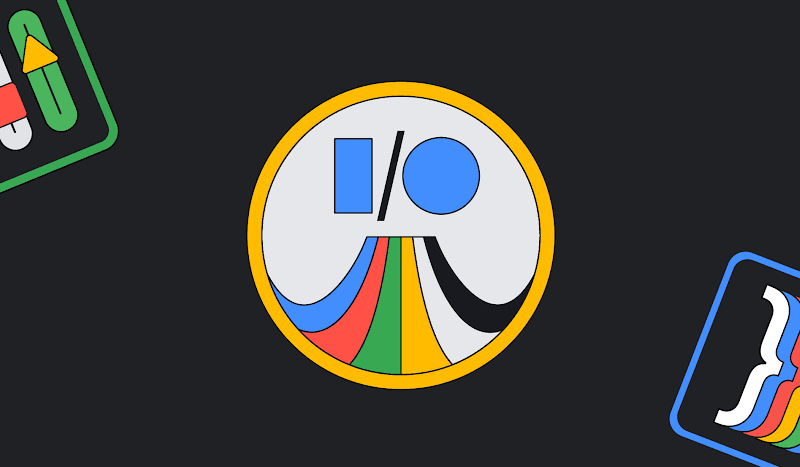Google I/O 2023: the “make more money on Android” round-up
Catch-up on the important Android in-app monetization & growth updates from 2023's Google I/O developer conference.

Google’s developer conference this year was the AI show.
Perhaps refreshingly, the RevenueCat yearly roundup of Google I/O will feature just one AI mention — and even then, we’ll promise to keep it short.
In this blog, we’re going to filter through the headlines and summarize everything that app businesses need to know about making money on Android.
What you need to know about… Subscription improvements
There are two changes coming to the way you can manage subscriptions in Play: flexible base prices and the ability to make price changes without the need for user action.
Last year, with the announcement of Google Play Billing Library 5, Google launched base plans, meaning a single subscription (a unique set of benefits) could have multiple configurations of billing period, renewal type, and price. Newly launched, you can now have multiple prices per billing period, for both prepaid and auto-renewing subscriptions. In the example Google gave, we’re shown a special annual price for “VIP” subscribers and a discount on prepaid plan top-up for students. In effect, this gives you multiple base plans with the same billing period.
A slide from a separate presentation also gives the impression that prepaid base plans will now support offers, but we can’t otherwise confirm this.

The second subscription update means that when increasing prices for existing subscribers, you have the option to make an opt-out price increase. If the price increase is eligible (e.g. the base plan can only have its price changed once every 365 days), you can give users advance warning of the increase, giving them either a 30 or 60-day window to either cancel or do nothing — if no action is taken, the user’s subscription will auto-renew at the new higher price. This all sounds very similar to a change introduced by Apple last year.
What you need to know about… Price experiments
Google has launched its own tool for testing price experiments for in-app products (which currently means only one-time purchases), accessible via Play Console.

We think it’s fantastic that more developers will have access to (codeless) tools to help them run pricing experiments. However, Google’s offering is showing a few limitations that developers need to be aware of:
- For RevenueCat blog readers, it’s crucial to note the most significant limitation in the current iteration: you can only conduct experiments with one-time purchases and not subscriptions.
- Right now, the tool is focused on helping developers test localized prices, to find the most effective price-point in different markets. This is an important experiment to run, but there appears to be plenty missing such as subscription durations or intro and winback offers.
- The metrics by which you measure success are also limited. Google’s tool bases statistical significance against cumulative revenue, and you can also get a breakdown against a small number of further metrics, like buyer ratio and ARPPU.

If you’re interested in running pricing experiments with your subscription products, you might like to check out RevenueCat Experiments. We allow you to run experiments across a host of pricing variables (and, with a bit of coding, changes to paywall design and copy). We also allow you to measure success against 18 different metrics and, by default, we show realized LTV, which should be the standard measure of success for your experiments.
Plus, of particular note, with RevenueCat Experiments you can run your tests across multiple platforms.
You can find more details about Google’s price experiments in their documentation and Play Academy Course. And if you wish to explore the topic further, you can read our guide to price testing for mobile apps.
What you need to know about… Google Play Billing Library 5 & 6
Google announced that Play Billing Library 6 is now available to be integrated.
Unlike the significant changes that were introduced with v5 (see our overview for a reminder), not too much has changed in v6. But the most important reminder of all is the deprecation timeline: v4 will be deprecated on November 1st this year. This means that unless you’ve upgraded to v5, post-November you will not be able to release a new app version to the Play Store. All versions of the Billing Library will follow a two-year deprecation cycle, so v5 will deprecate in 2024, v6 in 2025, and so on.
RevenueCat users will find it easy to upgrade to Play Billing Library 6: you can do so now for native Android, while Flutter and React Native are coming soon in the near future. It’s worth mentioning here that RevenueCat users will never need to worry about future deprecations as our platform manages library support for you. If you’re currently handling all of this on your own, you can move your in-app subscriptions to RevenueCat today and we’ll cover everything for you going forward.
What you need to know about… Featured products
Featured products are a new promotional option, coming in the “next few months”, that allows users to directly purchase in-app products within the Play Store. This looks to be similar to the option already available on iOS. However, in Google’s offering, it seems that developers have greater customizability, with options to only promote products in specific locations or to run featured product-specific offers.

While not new, Google also gave an update on older product promotion options. Developers participating in the rewards points program, Google Play Points, have seen revenue uplifts of “up-to 30%”, while early testing indicates that Quests (a “gamified mission-style journey” for earning Play Points) boosts engagement rate by up-to 50% and spend by up-to 4%.
What you need to know about… Custom store listings improvements
Last year, Google launched custom store listings, allowing developers to customize attributes such as screenshots, videos, descriptions, and app icons for different segments of users, such as those in a specific location or who have come via a deep link.
Now, there are a number of changes coming:
- You will be able to show custom listings to inactive users, so you can tailor messaging encouraging users to give your app another chance
- You will also be able to connect specific store listings to Google Ads campaign ad groups, letting you better match your messaging and hopefully improve install rates
- To make managing store listings easier, you will now be able to group store listings under a single base template, modified for different segments (e.g. a Halloween group, with each individual listing tailored for a different location)
Speaking of localized store listings, Google has also launched “translation models for 10 languages from Google Translate in Play Console. It can translate your app and store listing in minutes, at no cost.”
And let’s not forget AI
If you’re at a loss for words when it comes to writing your app’s store listing, you can use Google’s AI helper to auto-generate a short and long description. All you need to do is fill out a short prompt template with theme, tone of voice, and target user. We’ve yet to give this a test, but this will likely be of great help to indie developers without marketers on the team.

I asked Google’s Bard chatbot to write me a summary of the AI announcements during last week’s I/O — here’s a shortened extract of what it had to say.
“Google announced a new AI chatbot called Bard. Bard is powered by Google’s PaLM 2 language model, which is reportedly fluent in over 100 languages and has received math, logic, and reasoning upgrades.
Google also announced new AI-powered features for Google Maps. One of these features is called Immersive View, which will allow users to see a 3D representation of a location before they visit it.
Google also announced new AI-powered features for Android. One of these features is called Magic Compose, which will allow users to quickly compose text messages using AI-generated suggestions.
Finally, Google announced new AI-powered features for Google Workspace. One of these features is called Duet AI, which will help users create documents, presentations, and emails more quickly and easily.”
Perhaps most absent from this list, for me, is the addition of “Studio Bot” in Android Studio, an AI-powered code generator and fixer, which will also dish out best practices and tips. Early feedback I’ve seen doesn’t necessarily show Studio Bot to be an effective competitor to GPT-4 in its current form, however, having an AI-assistant built directly into your IDE is where the true potential lies.
Google covered these announcements in the “Boost your revenue with Play Commerce” and “What’s new in Google Play” videos, so now that you’ve enjoyed our highlights and commentary, you can go watch the full thing.
And, as a closing reminder: our team is working hard to ensure that developers using RevenueCat needn’t worry about any of these changes. As with our support for Play Billing Library 5 — let us do the hard work so you don’t have to.
You might also like
- Blog post
RevenueCat Paywalls: Now even more flexible with v2
A new editor, more flexibility, and full control over your paywall’s design.
- Blog post
Implementing in-app purchases and monetizing your Roku app: A step-by-step guide
A comprehensive guide to implementing and monetizing your Roku channel, from choosing the right strategy to technical tips and integration best practices.
- Blog post
How we built the RevenueCat SDK for Kotlin Multiplatform
Explore the architecture and key decisions behind building the RevenueCat Kotlin Multiplatform SDK, designed to streamline in-app purchases across platforms.

